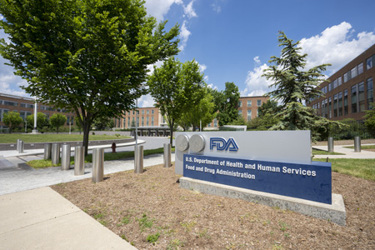New FDA White Paper Ties Quality To Financial Benefits
By John W.M. Claud and Mark I. Schwartz, Hyman, Phelps & McNamara

CDER’s Office of Pharmaceutical Quality (OPQ) recently published a white paper called Quality Management Initiatives in the Pharmaceutical Industry: An Economic Perspective. Not entirely a financial analysis, OPQ is making what amounts to a two-part sales pitch to pharma execs that investment in manufacturing quality systems will return profit and economic savings while also serving broader public health interests. This white paper is the latest release in what OPQ calls their initiative toward “mature quality systems management.” The timing of this release follows other related papers that endorse the idea that going beyond bare-minimum compliance actually pays dividends.
In part one of the paper, titled The Economic Return on Investment for Quality Management Initiatives, OPQ makes the case that investment in quality will not merely minimize regulatory headaches but will also advance real savings and profits. Instead of the usual regulatory finger-wagging about compliance, here OPQ is trying to speak the language of CFOs. A central principle here is that companies don’t need to affect massive quality overhauls to see financial benefits. Their research claims that targeted quality investments can lead to cuts in product defects by more than half and reductions in waste of 75%, while allowing companies to redeploy a quarter of their staff from quality troubleshooting to other work. To realize these kinds of benefits, OPQ uses economic modeling that aspires to show that there’s an optimal sweet spot for quality investments where companies can expect measurable returns on their spending. The paper shows this relationship as a curve where total costs decrease with quality investments until reaching an optimal point, after which additional spending produces diminishing returns.
The agency presents this as a stepwise approach where companies can make incremental investments rather than committing large amounts of capital upfront. According to their model, companies can choose an investment level based on their current situation and business needs, with each step theoretically delivering additional returns even without reaching the optimal investment point.
Lack Of Empirical Data Raises Concerns
FDA’s approach here has pros and cons. We appreciate FDA’s allowance that the approach is company-specific. It’s certainly true that not all manufacturing facilities nor quality management systems are created equal. We note, however, that FDA’s economic model relies heavily on case studies and anecdotal evidence rather than rigorous econometric analysis, which makes it difficult to verify their claimed returns or determine how applicable they are across different types of pharmaceutical operations.
Additionally, while FDA does provide a mathematical framework for finding the optimal investment level, it appears to us as more theoretical than practical. The key here is that companies should incrementally invest in quality up to the point until the cost of additional spending equals the savings it generates. This is a pretty standard economic optimization theory for finding a “sweet spot” for ROI. But FDA’s model admittedly doesn’t add in the realities of the “external complexities of the pharmaceutical market.” Thus, manufacturers are left with a model that doesn’t factor in any market-driven externalities. As a theoretical exercise, FDA’s economic model is interesting. But the jury is still out on how helpful it will be for quality managers, CFOs, and C-suite executives.
Quality As A Mechanism For Shortage Prevention
In part two, The Public Health Return on Investment for Quality Management Initiatives, focus shifts from company ROI to the broader public health benefits of mature quality systems, arguing that they help preserve patient safety, prevent drug shortages, and maintain supply chain stability. Here, FDA leans more into its traditional position that frames quality as a public health imperative, noting that functioning, compliant quality systems reduce the risk of treatment delays and adverse patient outcomes that ripple through healthcare systems during shortages.
Section Two’s public health arguments are compelling in principle, albeit not entirely connected to the economic ROI focus of the first part of the paper. FDA acknowledges some of the associated indirect costs with their public health concerns but doesn’t quantify how much companies should spend on quality systems to achieve these public health goals, assuming that the public benefits justify the private costs. And there’s no clear link here to FDA’s earlier theme that even small investments can lead to substantial rewards. This potentially leaves pharmaceutical executives in an awkward position of being asked to optimize for two different objectives without clear regulatory instruction on how to balance profit-driven quality investments against broader public health responsibilities.
Does This Perspective Affect Enforcement?
The report concludes that whether “companies are implementing their first quality culture initiatives or embracing new technologies, there are opportunities for companies at every stage of quality management implementation.”
These incremental opportunities, OPQ writes, are something “that pharmaceutical companies cannot afford to lose.” Time will tell if OPQ merges these economic principles into their inspection and classification assessments, space that is already inhabited by the public health philosophies this report also includes. While there’s a lot of interesting material here, this is a white paper, not a formal guidance document, so it’s not clear how or if this analysis might impact enforcement decisions going forward. We’ll report on any further advancements in the agency’s view on mature quality management as they develop.
A version of this article was published first on Hyman, Phelps & McNamara P.C.’s FDA Law Blog. It is republished here with permission.
About The Authors:
 John W.M. Claud is a counsel with the firm Hyman, Phelps & McNamara P.C. and counsels FDA-regulated entities on litigation, enforcement, and compliance matters including FDA inspections, Form 483s, warning and untitled letters and consent decrees, and internal investigations. Before joining the firm, he served as an assistant director of the U.S. Department of Justice’s Consumer Protection Branch. He began his career as an assistant district attorney in Manhattan. He is a frequent public speaker on matters of government enforcement strategies under the FDCA and corporate compliance best practices.
John W.M. Claud is a counsel with the firm Hyman, Phelps & McNamara P.C. and counsels FDA-regulated entities on litigation, enforcement, and compliance matters including FDA inspections, Form 483s, warning and untitled letters and consent decrees, and internal investigations. Before joining the firm, he served as an assistant director of the U.S. Department of Justice’s Consumer Protection Branch. He began his career as an assistant district attorney in Manhattan. He is a frequent public speaker on matters of government enforcement strategies under the FDCA and corporate compliance best practices.
 Mark Schwartz is a director at Hyman, Phelps & McNamara and a former regulator who served as deputy office director in FDA CBER’s Office of Compliance and Biologics Quality. Before CBER, he served in counselor roles for CBER and CDER while in FDA’s Office of Chief Counsel. At HPM, he advises clients on issues related to drugs, biologics, and medical device compliance. He received law degrees from Duke University School of Law and the Université de Sherbrooke. He has been an adjunct professor at George Mason University and Howard University law schools.
Mark Schwartz is a director at Hyman, Phelps & McNamara and a former regulator who served as deputy office director in FDA CBER’s Office of Compliance and Biologics Quality. Before CBER, he served in counselor roles for CBER and CDER while in FDA’s Office of Chief Counsel. At HPM, he advises clients on issues related to drugs, biologics, and medical device compliance. He received law degrees from Duke University School of Law and the Université de Sherbrooke. He has been an adjunct professor at George Mason University and Howard University law schools.
